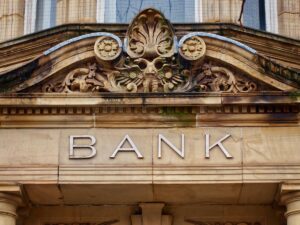Big Banks Say the Economy Is Healthier Than It Feels
Despite a backdrop of political uncertainty, trade tensions, and rising consumer prices, America’s largest banks delivered a surprisingly optimistic message last week: The economy is stronger than headlines suggest.
Quarterly earnings reports from JPMorgan Chase, Bank of America, Citigroup, Wells Fargo, and other major banks showed resilience in both consumer and commercial credit markets, as well as solid performance in core banking operations. For investors and consumers alike, the takeaway was clear: Don’t underestimate the American economy.
Consumers Are Keeping Up—Thanks to a Strong Labor Market
All four major consumer banks—JPMorgan, Bank of America, Citigroup, and Wells Fargo—reported low levels of delinquency and charge-offs. In simple terms, people are paying their bills on time, and banks aren’t having to write off large amounts of bad debt.
“While there are nuances around the edges, consumer credit is primarily about the labor market,” said JPMorgan CFO Jeremy Barnum during the bank’s earnings call. “In a world with a 4.1% unemployment rate, it’s just going to be hard—especially in our portfolio—to see a lot of weakness.”
This is a key point. Despite consumer sentiment surveys showing anxiety over inflation and policy uncertainty, people with jobs continue to service their debt responsibly, reinforcing the idea that confidence may be low, but fundamentals are strong.
Commercial Credit Risks Are Contained—for Now
There were a few blips in the commercial lending space. Wells Fargo noted a slight uptick in net charge-offs for business clients, and Citigroup flagged a rise in nonaccrual corporate loans. But in both cases, executives were quick to frame the losses as isolated rather than systemic.
“These were borrower-specific, with little signs of systematic weakness across the portfolio,” said Wells Fargo CFO Michael Santomassimo. At Citigroup, CFO Mark Mason chalked it up to an “idiosyncratic downgrade,” not a broader deterioration.
Translation: yes, there are always trouble spots—but there’s no wave of defaults or credit contagion brewing.
Political Uncertainty and Inflation Still Cloud the Outlook
Despite the upbeat tone from Wall Street, Main Street isn’t feeling quite so secure. Confusion surrounding trade policy under the Trump administration, particularly regarding tariffs, continues to inject volatility into markets and impact consumer prices. Recent inflation data already reflect rising costs tied to import duties, especially on everyday items.
This disconnect between economic performance and consumer perception is worth watching. While banks are operating from a position of strength, uncertainty in fiscal and trade policy could influence corporate behavior, investment decisions, and hiring down the line.
What It Means for Investors
The S&P 500 Bank Index has rebounded sharply in recent months, and strong earnings across the board suggest the rally may have legs. Still, much of the positive narrative hinges on the continuation of low unemployment and a resilient consumer.
For now, bank executives are betting on stability, even in the face of inflation, geopolitical risk, and shifting monetary policy. Whether that optimism proves well-placed will depend on how the macroeconomic story unfolds in the second half of the year.
Bottom Line:
The nation’s largest banks just delivered a collective vote of confidence in the U.S. economy. While consumers feel the pinch of rising prices and policy ambiguity, the underlying data—especially around employment and credit—tell a different story. And for now, at least, the story is one of quiet strength.

